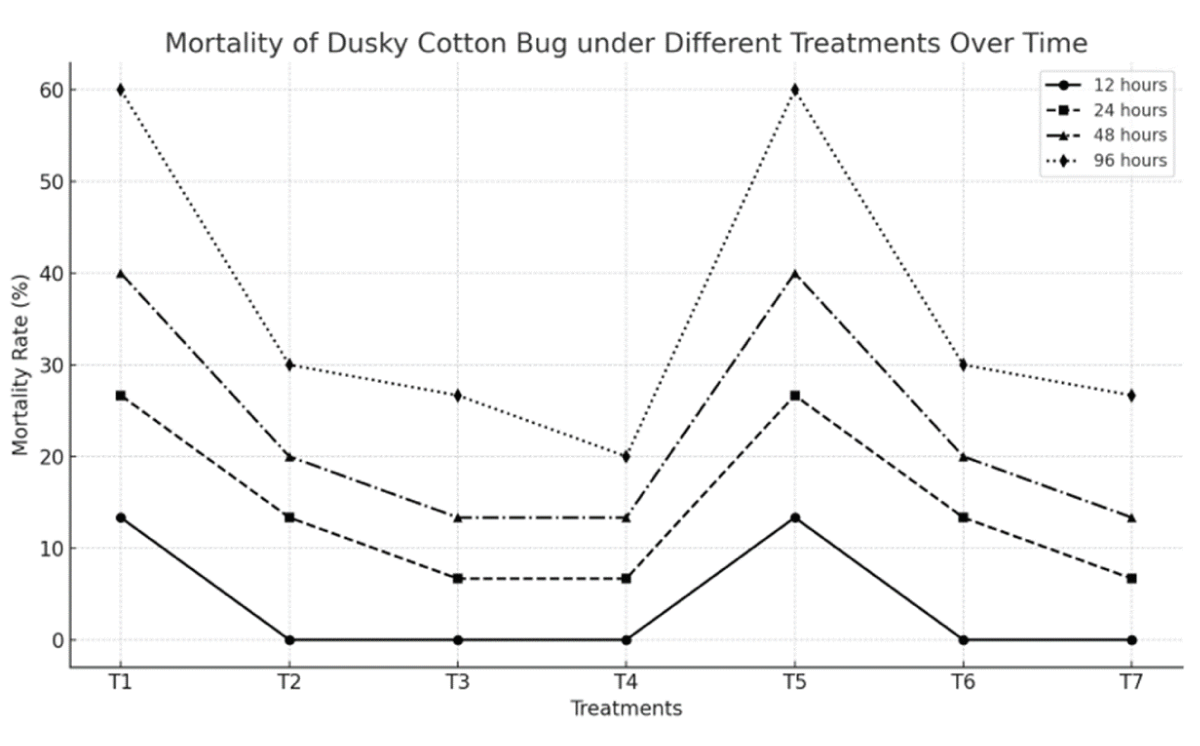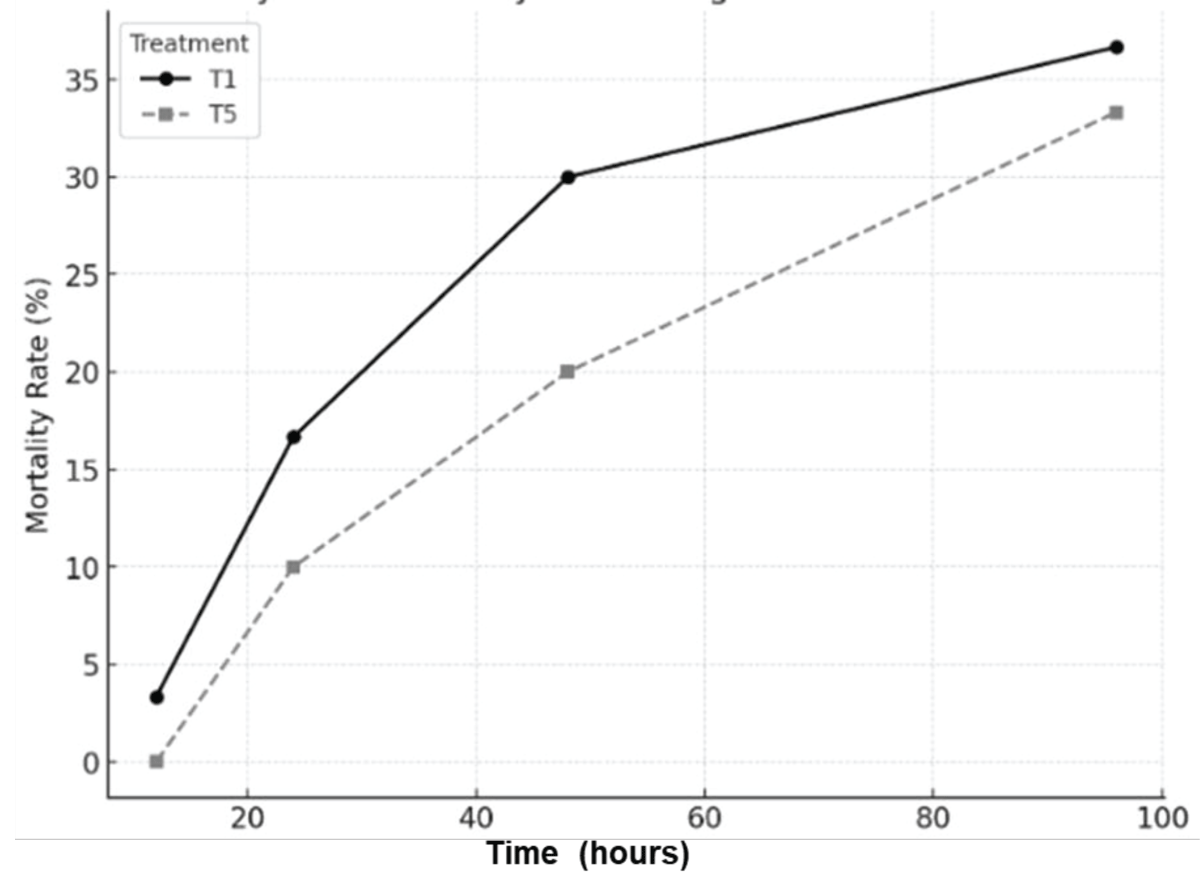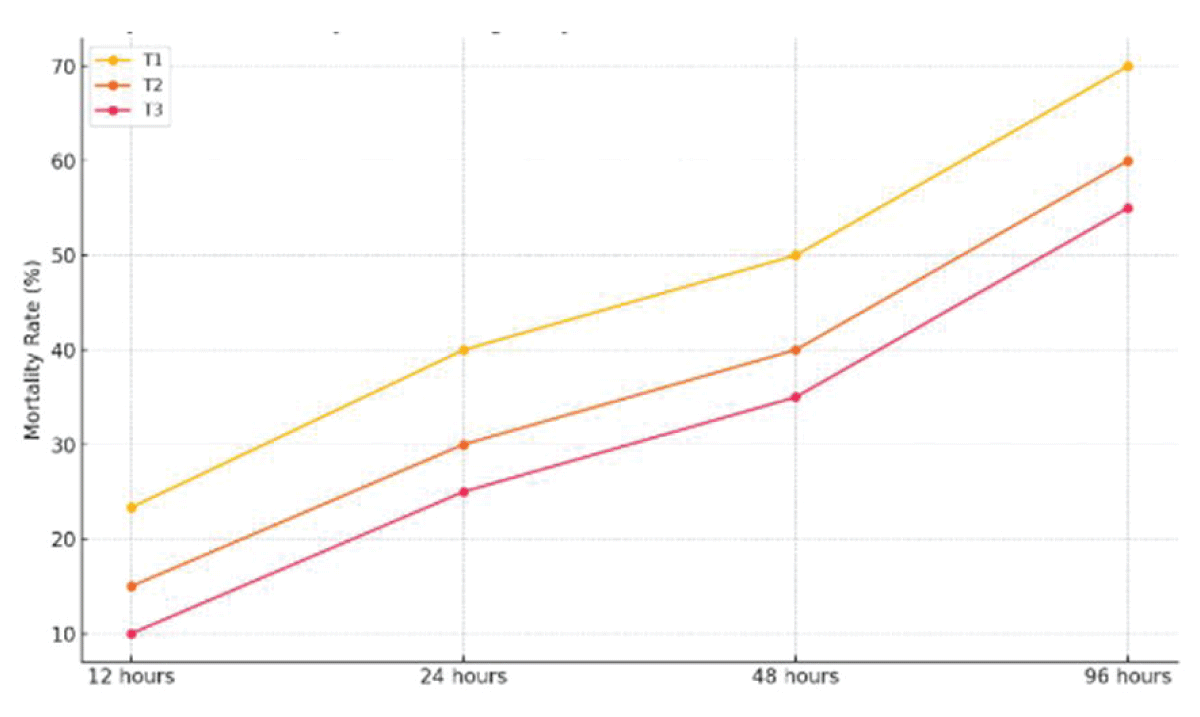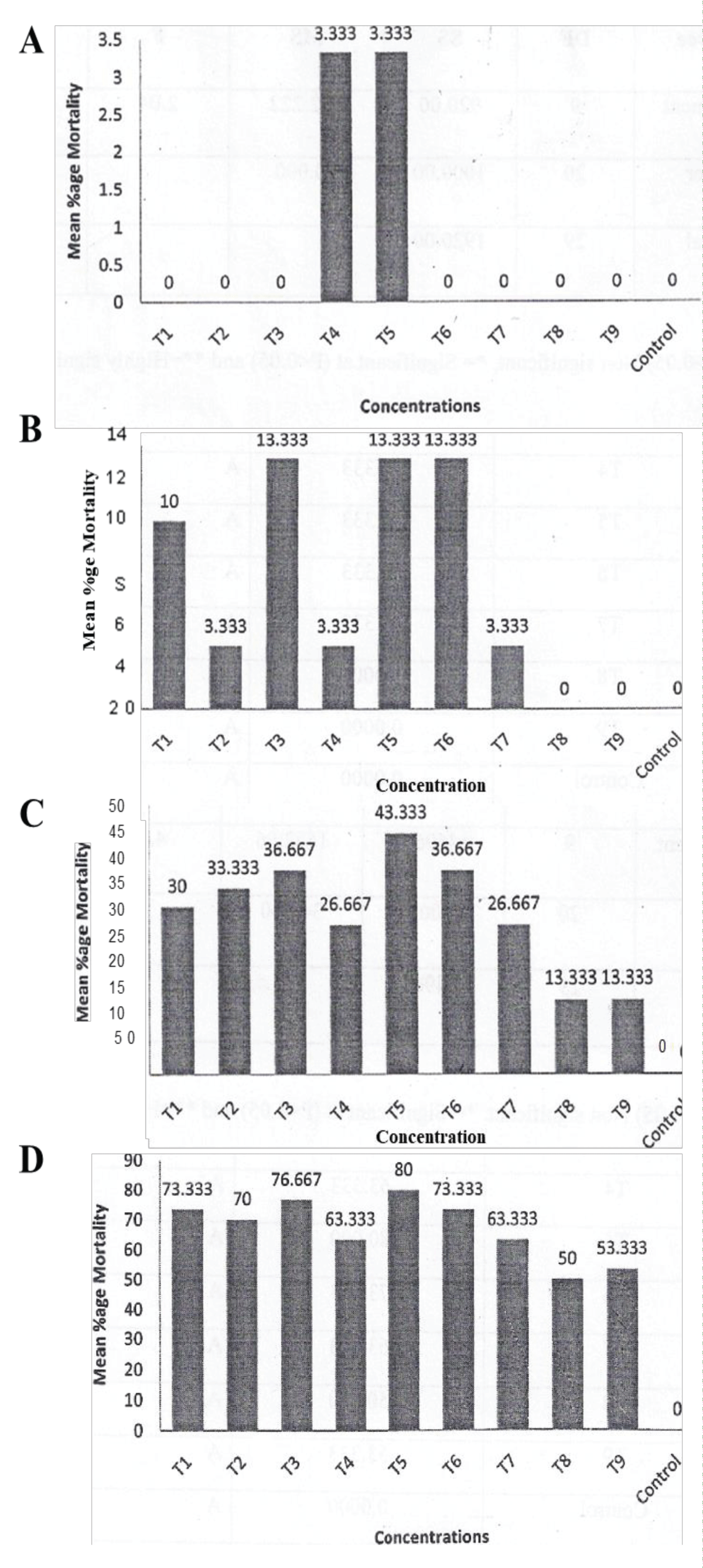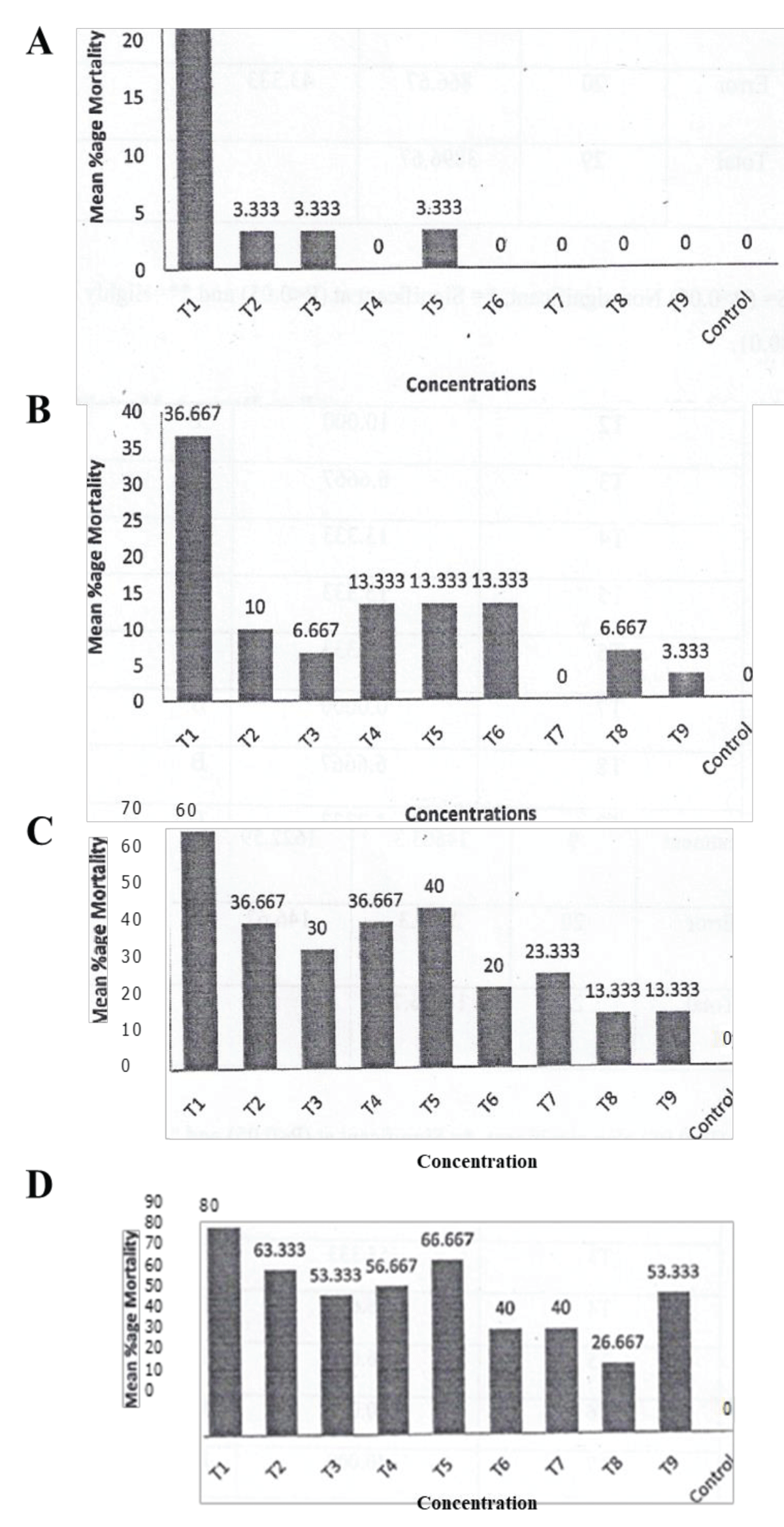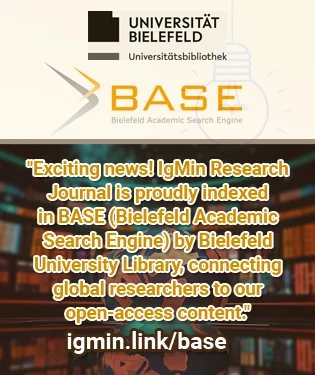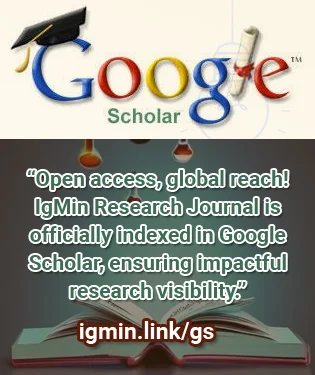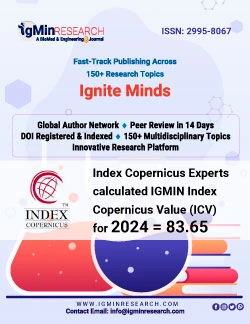要約
The study evaluates the efficacy of leufenuron, emamectin benzoate, and thiamethoxam against the Dusky Cotton Bug (Oxycarenus laetus Kirby) using residue-based bioassay methods. Key findings indicate that emamectin benzoate showed the highest efficacy with the lowest LC50 value, making it the most potent insecticide among those tested. Leufenuron and thiamethoxam followed, displaying moderate effectiveness. The results highlight the comparative advantages of emamectin benzoate in controlling Dusky Cotton Bug populations, suggesting its potential role in integrated pest management strategies. This study underscores the need for environmentally friendly alternatives to traditional insecticides in mitigating yield losses in cotton production.




